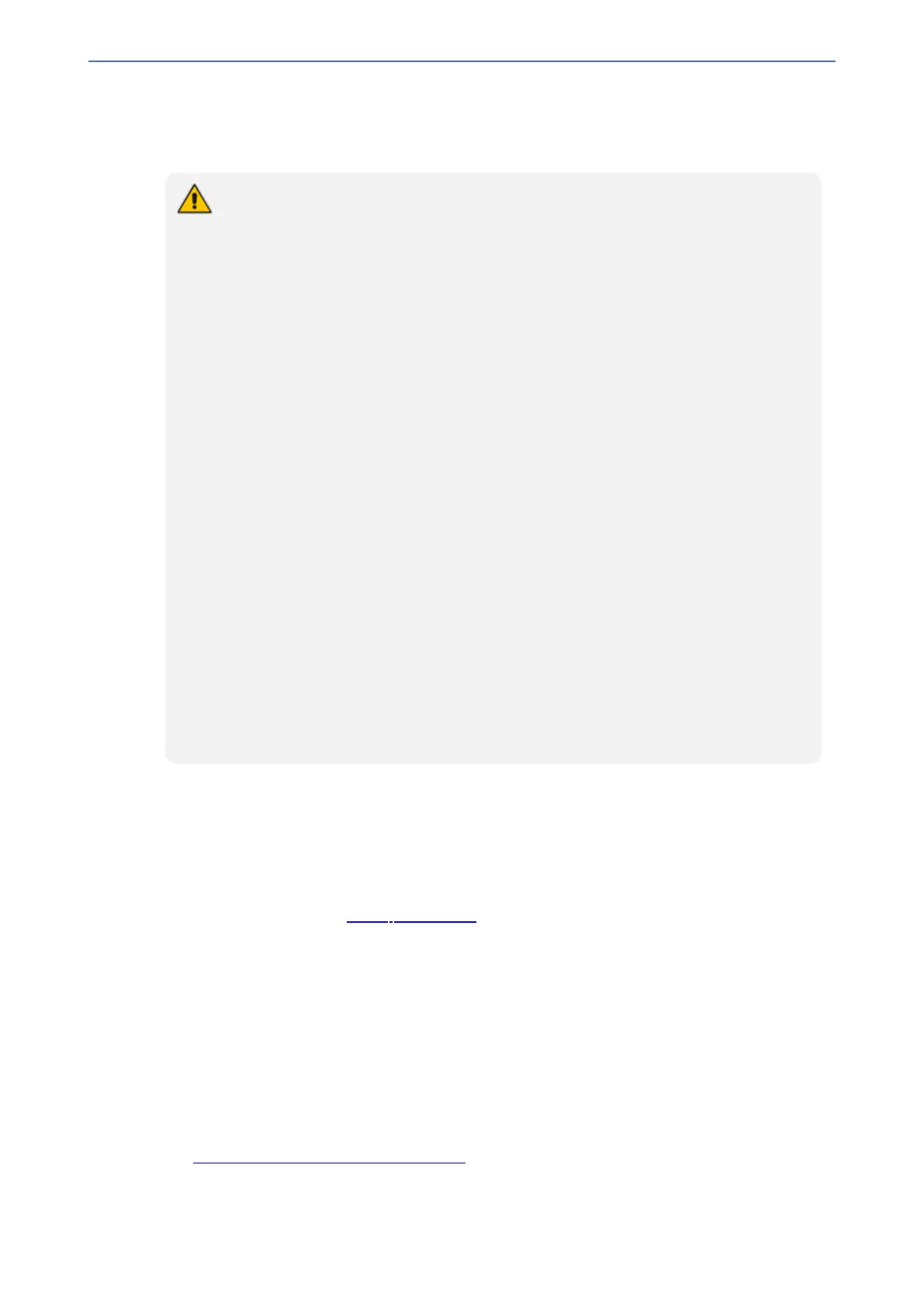CHAPTER30 SBC Overview
Mediant 1000 Gateway & E-SBC | User's Manual
5. IP Groups of the endpoints use the same SIP Interface and the SIP Interface's 'SBC Direct
Media' parameter is set to Enable When Single NAT (SIPInterface_SBCDirectMedia = 2), and
the endpoints are located behind the same NAT.
● If you enable direct media by the SBCDirectMedia parameter, direct media is
applied to all calls even if direct media is disabled per SIP Interface.
● If you configure direct media for all calls (using the SBCDirectMedia parameter),
the device does not open voice channels nor allocate media ports for the calls, as
the media always bypasses the device. In contrast, if you configure direct media
for specific calls, the device allocates ports for these calls. The reason is that the
ports may be required for mid-call services (e.g., early media, call forwarding, call
transfer, and playing on-hold tones) handled by the server (IP PBX), which traverse
the device. Therefore, make sure that you have allocated sufficient media ports
(Media Realm) for such calls.
● Direct media cannot operate with the following features:
✔ Manipulation of SDP data (offer-answer transaction) such as ports, IP
address, coders
✔ Force transcoding
✔ Extension Coders
✔ Extension of RFC 2833 / out-of-band DTMF / in-band DTMF
✔ Extension of SRTP/RTP
● All restriction features (Allowed Coders, restrict SRTP/RTP, restrict RFC 2833)
can operate with direct media. Restricted coders are removed from the SDP offer
message.
● For two users belonging to the same SIP Interface that is enabled for direct media
and one of the users is defined as a foreign user (example, “follow me service”)
located in the WAN while the other is located in the LAN: calls between these two
users cannot be established until direct media is disabled for the SIP Interface. The
reason for this is that the device does not interfere in the SIP signaling. In other
words, parameters such as IP addresses are not manipulated for calls between
LAN and WAN (although required).
Restricting Audio Coders
You can configure a list of permitted (allowed) voice coders that can be used for a specific SIP
entity (leg). In other words, you can enforce the use of specific coders. If the SDP offer in the
incoming SIP message does not contain any coder that is configured as an allowed coder, the
device rejects the calls (unless transcoding is implemented whereby Extension coders are added to
the SDP, as described in Coder Transcoding). If the SDP offer contains some coders that are
configured as allowed coders, the device manipulates the SDP offer by removing the coders that
are not configured as allowed coders, before routing the SIP message to its destination. The device
also re-orders (prioritizes) the coder list in the SDP according to the listed order of configured
allowed coders.
For example, assume the following:
■ The SDP offer in the incoming SIP message contains the G.729, G.711, and G.723 coders.
■ The allowed coders configured for the SIP entity include G.711 and G.729.
The device removes the G.723 coder from the SDP offer, re-orders the coder list so that G.711 is
listed first, and sends the SIP message containing only the G.711 and G.729 coders in the SDP.
The allowed coders are configured in the Allowed Audio Coders Groups table. For more information,
see Configuring Allowed Audio Coder Groups.
- 732 -

